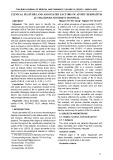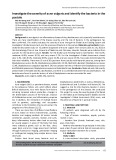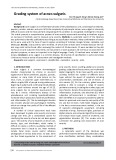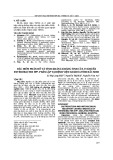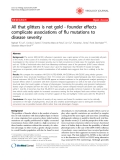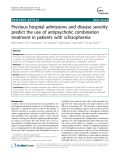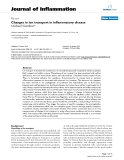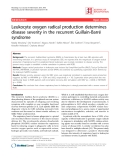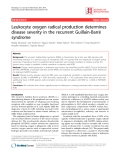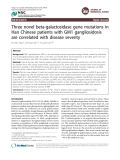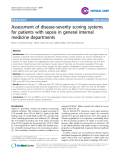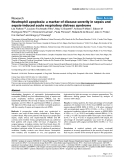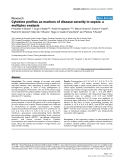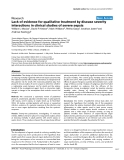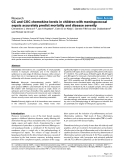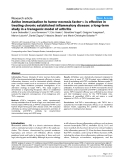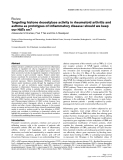
HUE JOURNAL OF MEDICINE AND PHARMACY ISSN 3030-4318; eISSN: 3030-4326 71
Hue Journal of Medicine and Pharmacy, Volume 14, No.6/2024
Investigate the severity of acne vulgaris and identify the bacteria in the
pustule
Mai Ba Hoang Anh1*, Tran Van Khanh2, Vo Tuong Thao Vy1, Mai Thi Cam Cat1,
Tran Thi Quynh Trang1, Le Thi Thuy Nga3, Nguyen Thi Tra My1
(1) Dermatology Department, Hue University of Medicine and Pharmacy, Hue University
(2) Internal medicine residency, Hue University of Medicine and Pharmacy, Hue University
(3) Dermatology Clinic, Hue University of Medicine and Pharmacy Hospital
Abstract
Background: Acne vulgaris is an inflammatory disease of the pilosebaceous unit, especially in adolescents.
There are many classifications of the disease severity, and the role of bacteria in the pathogenesis has
been confirmed. This article evaluates the severity of acne through the Global Acne Grading System and
Investigator’s Global Assessment, and the presence of bacteria in the pustule. Materials and methods: Cross-
sectional descriptive study on 72 patients diagnosed with acne vulgaris from January 2021 to July 2022 at
the Dermatology Clinic at Hue University of Medicine and Pharmacy Hospital. Samples were collected from
pustules for the bacterial culture. Results: For the Global Acne Grading System classification: mild 34.7%,
moderate 45.9%, severe 16.7%, and very severe 2.7%. For the Investigator’s Global Assessment: almost
clear 4.2%, mild 29.2%, moderate 30.5%, severe 22.2%, and very severe 13.9%. Two scales demonstrated the
inter-rater reliability. There were 16 out of 30 specimens from pustules with bacterial presence, among them
Staphylococcus aureus 56.4%, Staphylococcus epidermidis 12.5%, Methicillin-Resistant Staphylococcus aureus
12.5%, Staphylococcus coagulase negative 6.2%; two samples had the co-infection with Staphylococcus aureus
and Klebsiella pneumonia, Staphylococcus aureus and Enterobacter spp. Conclusion: Moderate and mild severity
predominate in the GAGS and IGA classifications, and there is a correlation between the two classifications. Five
bacteria were found in pustular lesions, of which Staphylococcus aureus accounted for most.
Keywords: Acne vulgaris, GAGS, IGA, bacteria.
Corresponding Author: Mai Ba Hoang Anh. Email: mbhanh@huemed-univ.edu.vn
Received: 2/1/2024; Accepted: 10/10/2024; Published: 25/12/2024
DOI: 10.34071/jmp.2024.6.10
1. BACKGROUND
Acne vulgaris (AV) is a prevalent disease, related
to the sebaceous follicle unit, which affects about
85% of adolescents. Four main factors form lesions
including increased sebum production, changes in
the keratinization process of the follicular, invasion
of Cutibacterium acnes, and inflammatory response
[1]. In addition, the interaction of multiple factors
such as genetics, psychology, and occupation
contribute to the formation of acne and worsen the
progression of the disease [1], [2].
There are more than 25 different classifications
of acne, based on lesion characteristics, quantity,
location, and imaging methods. AV lesions include
comedones, papules, pustules, nodules, and cysts;
deep inflammatory lesions often lead to scarring.
AV usually appears in areas of the body that have
many sebaceous glands such as the face, chest,
upper back, and arms. Image assessment methods
through fluorescence imaging, polarization imaging
or multispectral imaging help analyze lesions more
clearly [3].
Studies have found many bacteria such as
Staphylococcus epidermidis, S. aureus, Klebsiella sp.,
Escherichia coli, and S. vitulinus in AV lesions [4]. This
suggests a role for other bacteria, besides C. acnes,
in the pathogenesis of this disease. We conducted
this project to survey the severity grade of AV based
on the Global Acne Grading System (GAGS) and the
Investigator’s Global Assessment (IGA) score, and
the presence of bacteria in pustular lesions.
2. MATERIALS AND METHOD
2.1. Materials
72 patients were diagnosed with AV by the
following criteria:
- Type of lesions: comedone, papule, pustule,
nodule or cyst.
- Location: face (cheeks, forehead, nose, chin,
jaw), chest, back.
Patients who attended to participate in this study
were under 25 years old and had not received oral or
topical medication treatment for a month.
2.2. Methods
Study subject
A cross-sectional descriptive study proceeded





